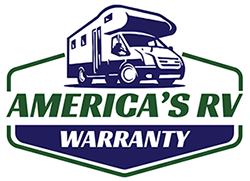
When RV owners are in the market for a warranty for their vehicle, they often ask two questions. First they ask, “How much will I pay for repairs?” Next, they want to know how a warranty works—how do they use the service?
The two questions are connected, so we’ll take a look at how customers apply their warranty to repairs. In doing so, we’ll give a thorough answer to the question of cost.
While warranty contracts are complicated, a warranty is easy to use.
For customers, the process is simple and straightforward. It needs to be, since RVs break down often—the majority of RVs will suffer a major breakdown within five years of purchase. A warranty not only makes repairs less expensive, it also makes them more convenient.
Think about it: no haggling, no shopping around for the best price, no worrying if you’re paying too much or receiving unnecessary repairs. A warranty helps eliminate (some) stress from the repair process.
It’s important to remember that RV warranties cover mechanical issues, not damage. Insurance covers damage and accidents, while a warranty protects customers from the inevitable failure of the systems and appliances that make the RV function.
Don’t call your warranty company when you’re in a wreck or a tree falls on your RV. But when something breaks down in your vehicle or fails due to normal wear and tear, your warranty steps in to help.
The first thing to do is to take your rig to the shop. ARW allows repairs at any licensed repair facility in the US or Canada. Other companies demand that you use the dealership from which you purchased it if you are close by (for example, within 100 miles). Beware any company that limits where you can use your coverage.
If your vehicle is disabled at the campsite or on the roadside, you can use a mobile mechanic with most warranties. Keep in mind that, aside from the repair costs, mobile mechanics charge an additional service fee, sometimes called a trip charge.
Warranty companies assist with this charge, but some pay less than others.America’s RV Warranty pays up to $200 per mechanic visit, which is double what some other companies pay.
If your vehicle is disabled roadside or at the campsite, check and see if your warranty policy includes any roadside assistance. This could save you money on towing your RV to the repair shop. ARW’s roadside assistance also reimburses RV owners for food and lodging expenses while their motorhome is in the shop.
While most companies only cover mobile mechanic repairs when your RV is disabled, ARW now covers repairs done by a mobile mechanic even if your RV is functional. This coverage is available on new plans only, and was included with our plans in response to long wait times at RV repair shops nationwide.
If you’re not sure where to take your RV, call your roadside assistance service (if you have it) or your warranty for help finding a repair shop.
Typically, all the customer has to do is mention which warranty company they have and provide their warranty info. The service center will work with the warranty to take care of the rest.
Since RV warranties are fairly common in the industry, RV repair shops are used to dealing with warranties for repairs. Some larger repair facilities have employees solely dedicated to communicating with warranty companies.
The mechanic will diagnose the issue(s) and send an itemized invoice to the warranty company, who will approve any covered repairs. ARW’s administrator has representatives standing by to make the approval process as quick as possible.
The repair approval process is based on standardized and published costs and labor-hours for repairs. This ensures that the warranty company pays fair rates to mechanics (more on this below), but also keeps customers from getting price-gouged for non-covered repairs.
Humans are at the center of this process, however, not numbers, and our administrator is there to ensure that even difficult or non-standard repairs receive appropriate coverage.
In addition, ARW pays full retail price for parts. Other companies fight over every nickel and dime, and refuse to pay the price of a new part, covering only the cost of a refurbished part. ARW understands that new parts make for lasting repairs, and we put our money where our mouth is.
Not all repair shops work with RV warranties—this is usually specific to one or two companies—so let the mechanic know you have a warranty before beginning repairs.
This brings up to the question every RV wants to know: how much will this cost? While each case is different, the equation is simple.
If your repairs are covered by your plan, all you’ll need to do is pay the deductible which is set by your plan. ARW offers deductibles of $100, $200, and $500. The deductible is paid per visit, not per item, so if your RV has two covered issues that need repair, you’ll still only pay one deductible.
If your RV needs repairs that are not covered by the warranty (for example, cosmetic repairs, non-mechanical repairs, upgrades, or roof leak repairs), you’ll pay for those costs in addition to the deductible you pay for covered repairs.
While some companies only pay the national average rate for labor on repairs, we will match the average local rate, so you’re covered even if you need repairs in a state or city with higher repair costs.
An extended warranty for your RV is a vehicle service contract between you and the warranty provider. This service plan provides for RV repairs after your RV manufacturer’s warranty runs out.
A warranty functions as a protection plan for when an RV breaks due to mechanical failure—the failures that come with routine use over time. When failures cause costly repairs, warranty holders only have to pay their deductible for covered repairs. The warranty company pays the rest of the bill directly to the RV repair facility. Rather than tens of thousands for a diesel engine repair, RV owners could potentially pay a hundred dollars.
An extended warranty is not an insurance policy, and is not meant to fix your vehicle when it’s in the service center because of a collision or other physical damage. In the event of a collision with another vehicle, a warranty will not cover the other vehicle, either—that’s liability coverage, which is available through an insurance company. Note, however, that many warranty providers offer roadside assistance for emergency mechanical breakdown and some accidents, such as flat tires and blowouts.
With most reputable coverage, the service plan can be used at any licensed repair facility in the United States or Canada.
ARW will confirm that the repairs have been completed and pay the mechanic the amount that is owed, leaving you to carry on with your adventure on the road.
We pay for new parts, and most of the parts come with a factory warranty. That means any subsequent failure of that part is also covered. Each repair center will offer a work guarantee on their repairs as well.
In order to take full advantage of their coverage, customers need to understand which issues are and are not covered. They also need to follow the proper guidelines to ensure that their repairs are eligible for coverage. Here are a few examples of issues that customers have faced in the past:
If the RV is broken down and needs to be towed to the shop, the warranty itself doesn’t cover this issue. We offer an additional roadside assistance package that includes towing. Roadside assistance is also available from other RV service providers. Towing might not be needed if a mobile mechanic is available to make repairs.
Some RV owners don’t learn about their coverage. They expect everything to be covered, including damage, cosmetic issues, and items like furniture. When they need repairs they are upset to learn that their repair isn’t covered. We urge all customers to ask questions, read the information on our website, and check out a sample contract.
In some places in America, it’s still hard to find a repair shop in the area. Unfortunately, having a warranty does not solve this problem. Luckily, as RV ownership rapidly becomes more popular in the United States, more and more repair shops are opening.
Typically, customers and/or the repair shop contacts the warranty company before starting repairs. If this isn’t possible for any reason, customers have a business day after repairs are made to submit a claim.
For customers, this means that if they received repairs and did not supply their warranty information, they have some time to submit the repair after the fact.
Pre-existing conditions are not covered, so if customers are buying a used RV, they’ll want to make sure that the vehicle receives an inspection before purchase. Some customers purchase a warranty thinking that it will cover the issues that the unit has when they purchase it. Just like insurance, warranties do not apply retroactively.
The RV repair process is no more complicated with a warranty than without one, but if you still have questions, feel free to call 1-844-609-1070 to speak with a representative. You can also view the Frequently Asked Questions available towards the bottom of our home page—check the section titled “Using the Warranty.”
